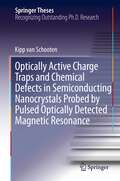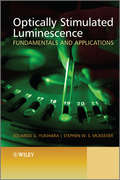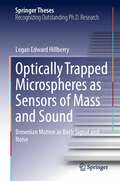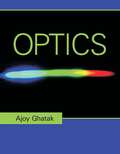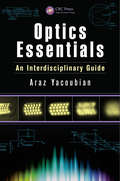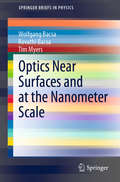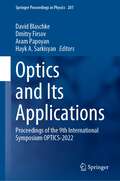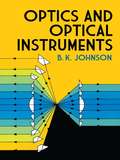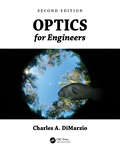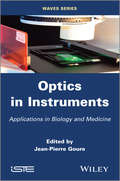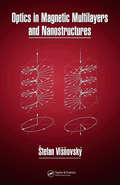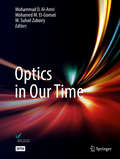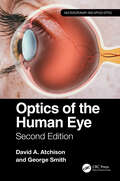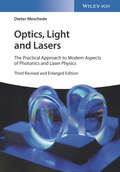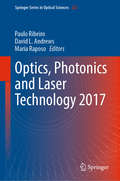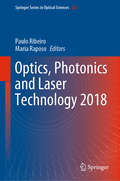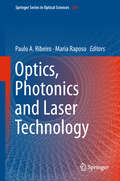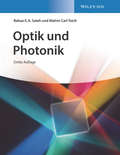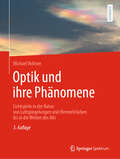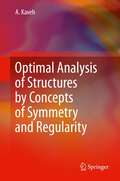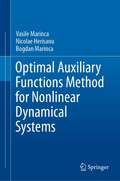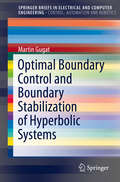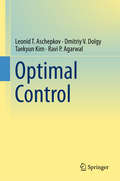- Table View
- List View
Optically Active Charge Traps and Chemical Defects in Semiconducting Nanocrystals Probed by Pulsed Optically Detected Magnetic Resonance
by Kipp Van SchootenColloidal nanocrystals show much promise as an optoelectronics architecture due to facile control over electronic properties afforded by chemical control of size, shape, and heterostructure. Unfortunately, realizing practical devices has been forestalled by the ubiquitous presence of charge "trap" states which compete with band-edge excitons and result in limited device efficiencies. Little is known about the defining characteristics of these traps, making engineered strategies for their removal difficult. This thesis outlines pulsed optically detected magnetic resonance as a powerful spectroscopy of the chemical and electronic nature of these deleterious states. Counterintuitive for such heavy atom materials, some trap species possess very long spin coherence lifetimes (up to 1.6 µs). This quality allows use of the trapped charge's magnetic moment as a local probe of the trap state itself and its local environment. Beyond state characterization, this spectroscopy can demonstrate novel effects in heterostructured nanocrystals, such as spatially-remote readout of spin information and the coherent control of light harvesting yield.
Optically Stimulated Luminescence
by Stephen W. Mckeever Eduardo G. YukiharaOptically stimulated luminescence has developed into one of the leading optical techniques for the measurement and detection of ionizing radiation. This text covers, in a readable manner, advanced modern applications of the technique, how it can play a useful role in different areas of dosimetry and how to approach the challenges presented when working with optically stimulated luminescence.The six chapters are as follows:Introduction, including a short history of OSL and details of successful applications Theory and Practical Aspects Personal Dosimetry Space Dosimetry Medical Dosimetry Other Applications and Concepts, including retrospective and accident dosimetry, environmental monitoring and UV dosimetry Throughout the book, the underlying theory is discussed on an as-needed basis for a complete understanding of the phenomena, but with an emphasis of the practical applications of the technique. The authors also give background information and relevant key references on each method, inviting the reader to explore deeper into the subject independently.Postgraduates, researchers, and those involved with radiation dosimetry will find this book particularly useful. The material is both relevant and accessible for both specialists and those new to the field, therefore is fundamental to any academic interested in modern advances of the subject.
Optically Trapped Microspheres as Sensors of Mass and Sound: Brownian Motion as Both Signal and Noise (Springer Theses)
by Logan Edward HillberryThis thesis makes significant advances in the use of microspheres in optical traps as highly precise sensing platforms. While optically trapped microspheres have recently proven their dominance in aqueous and vacuum environments, achieving state-of-the-art measurements of miniscule forces and torques, their sensitivity to perturbations in air has remained relatively unexplored. This thesis shows that, by uniquely operating in air and measuring its thermally-fluctuating instantaneous velocity, an optically trapped microsphere is an ultra-sensitive probe of both mass and sound. The mass of the microsphere is determined with similar accuracy to competitive methods but in a fraction of the measurement time and all while maintaining thermal equilibrium, unlike alternative methods. As an acoustic transducer, the air-based microsphere is uniquely sensitive to the velocity of sound, as opposed to the pressure measured by a traditional microphone. By comparison to state-of-the-art commercially-available velocity and pressure sensors, including the world’s smallest measurement microphone, the microsphere sensing modality is shown to be both accurate and to have superior sensitivity at high frequencies. Applications for such high-frequency acoustic sensing include dosage monitoring in proton therapy for cancer and event discrimination in bubble chamber searches for dark matter. In addition to reporting these scientific results, the thesis is pedagogically organized to present the relevant history, theory, and technology in a straightforward way.
Optics
by Ajoy GhatakOptics by Professor Ghats is a classic text designed to provide a comprehensive account of important topics in this exciting field. The book aims to meet the requirements of a course on Optics for undergraduate students of science and engineering. This brand new multi-colour edition comes with a number of careful revisions in the text and colourful illustrations, thus making it even more exciting and reader friendly.
Optics Essentials: An Interdisciplinary Guide
by Araz YacoubianA Valuable Reference for Understanding Basic Optical Principals Need a crash course in optics? If you are a non-specialist with little or no knowledge of optical components, systems, or hardware, who suddenly finds it necessary to work with optics in your given field, then Optics Essentials: An Interdisciplinary Guide is the book for you. Aimed at engineers and other interdisciplinary professionals tackling optics-related challenges, this text provides a basic overview of optical principles, concepts, and applications as well as worked examples throughout. It enables readers to gain a basic understanding of optics and sense of optical phenomena, without having to commit to extended periods of study. Contains MATLAB® Simulations and Suggested Experiments The book provides MATLAB simulations to help the reader visualize concepts, includes simple experiments using everyday materials that are readily available to solidify optical principles, and provides worked examples throughout. It contains a set of suggested experiments in each chapter designed to help the reader understand and visualize the basic principles. While this book assumes that the reader has a basic background in mathematics, it does not burden or overwhelm them with complex information or heavy mathematical equations. In addition, while it also briefly discusses advanced topics, readers are directed to the appropriate texts for more detailed study. Comprised of 11 chapters, this illuminating text: Describes light sources, such as lasers, light-emitting diodes, and thermal sources Compares various light sources, and photometric and radiometric parameters Discusses light detection, including various detector types, such as photon detectors and thermal detectors, and other topics relating to light detection Addresses manipulation of light, and covers reflection, refraction, diffraction and interference, absorption, and scattering Factors in polarization Explores the basic principles of geometrical optics, covering ray tracing and formulation based on the assumption that light comprises of optical "rays" Defines imaging systems and topics related to imaging systems Refers to guiding light waves Considers various topics related to optics, electronics, software, and applications Covers combining optical systems with electronics and software Presents various optical sensing phenomena and different types of sensors Optics Essentials: An Interdisciplinary Guide simplifies optical principles to make it easy to grasp by technical professionals that are outside of the optical field, and serves industry professionals, technical managers, researchers, and students.
Optics Near Surfaces and at the Nanometer Scale (SpringerBriefs in Physics)
by Tim Myers Wolfgang Bacsa Revathi BacsaThis book explores the physical phenomena underlying the optical responses of nanoscale systems and uses this knowledge to explain their behavior, which is very different to what is encountered on the macroscopic scale. In the first three chapters, the authors discuss important aspects of wave optics on surfaces and at small scales, such as the optical interference near surfaces, the physical origin of the index of refraction, and how imaging optical fields can be used to enhance resolution in optical diffraction microscopy. The last two chapters treat a concept on the consequence of the finite size of the focal spot in optical spectroscopy and how the index of refraction can be related to scattering of an ensemble of discrete scatterers. The concepts described here are important to understanding the optical properties of nanoparticles or nanostructured surfaces and are not covered in most fundamental optics courses. This book is designed for researchers and graduate students looking for an introduction to optics at small scales.
Optics and Its Applications: Proceedings of the 9th International Symposium OPTICS-2022 (Springer Proceedings in Physics #281)
by David Blaschke Dmitry Firsov Aram Papoyan Hayk A. SarkisyanThis book features selected articles based on contributions presented at the 9th International Symposium on Optics and Its Applications (OPTICS-2022) in Yerevan-Ashtarak, Armenia. The annual OPTICS symposium brings together renowned experts from all over the world working in the fields of atomic optics, plasmonics, optics of nanostructures, as well as the optics of condensed matter, and provides a perfect setting for their discussions of the most recent developments in this area.The 9th iteration in this series, dedicated to the 80th birthday of Academician Eduard Kazaryan, focuses on topics dealing with the spectroscopy of real and artificial atoms, linear and nonlinear optical characteristics of quantum wells, and two-dimensional materials. The book highlights recent results of few-particle optical characteristics of artificial atoms in the framework of the exactly solvable Moshinsky model, as well as an electro-optical analog of the magneto-optical Faraday effect. In addition, a detailed study of the nucleation process, its characterization, as well as electronic and optical properties of graded composition quantum dots in the Stranski−Krastanov growth mode, is presented.
Optics and Optical Instruments: An Introduction
by B. K. JohnsonThis book illustrates basic practical applications of optical principle. Working models of telescopes, microscopes, photographic lenses, and optical projection systems are diagrammed and explained in full, as are the basic experiments for determining accuracy, power, angular field of view, amount of aberration, and all other necessary facts about the instrument. Throughout the book, only elementary mathematics is used, for the benefit of the student and the beginner in the field of optics.The author, an assistant professor at the Imperial College of Science and Technology in London, shows how to set up working models of each of the four types of instruments named above, so that the reader can see for himself the effects of changing the focal length, using different types of lenses, rotating the lens, and other experiments. He also includes a number of experiments to illustrate theoretical principles such as the reflection and refraction of light and focal length measurements of concave and convex lenses.A chapter on the human eye follows, and the author explains how to set up a simple working model of the eye in order to illustrate myopia, astigmatism, hypermetropia, and the visual acuity of the eye. Professor Johnson concludes with an important chapter on the working and testing of optical glass, in which he describes the roughing of lenses, the principles of the grinding and polishing processes, abrasives, edging, angle measurement, and other important steps in the production of optical glass. An appendix is included on the cleaning of glass surfaces, silvering, photographic items, developers, collodion films, and waxes and cements used for various purposes in optical work.This is a valuable work for the student and the amateur hobbyist as well as for many who use optical instruments in science and industry. It is written clearly and economically, with the needs of the practical worker in the field of optics held constantly in mind.
Optics and Photonics
by Committee on Harnessing Light: Capitalizing on Optical Science Trends Challenges for Future ResearchOptics and photonics technologies are ubiquitous: they are responsible for the displays on smart phones and computing devices, optical fiber that carries the information in the internet, advanced precision manufacturing, enhanced defense capabilities, and a plethora of medical diagnostics tools. The opportunities arising from optics and photonics offer the potential for even greater societal impact in the next few decades, including solar power generation and new efficient lighting that could transform the nation's energy landscape and new optical capabilities that will be essential to support the continued exponential growth of the Internet. As described in the National Research Council report Optics and Photonics: Essential Technologies for our Nation, it is critical for the United States to take advantage of these emerging optical technologies for creating new industries and generating job growth. The report assesses the current state of optical science and engineering in the United States and abroad--including market trends, workforce needs, and the impact of photonics on the national economy. It identifies the technological opportunities that have arisen from recent advances in, and applications of, optical science and engineering. The report also calls for improved management of U. S. public and private research and development resources, emphasizing the need for public policy that encourages adoption of a portfolio approach to investing in the wide and diverse opportunities now available within photonics. Optics and Photonics: Essential Technologies for our Nation is a useful overview not only for policymakers, such as decision-makers at relevant Federal agencies on the current state of optics and photonics research and applications but also for individuals seeking a broad understanding of the fields of optics and photonics in many arenas.
Optics for Engineers
by Charles A. DiMarzioThis textbook provides an accessible introduction to the fundamentals of geometric and physical optics as they relate to practical problems encountered by engineers and researchers in designing and analyzing optical systems.In this updated edition, the author focuses on topics that are critical to understanding how the basic principles of optics affect design decisions. In addition to information on breadboarding experiments and prototypes, the new edition also expands its coverage of diffraction and includes numerous complete examples, and practical remindersProfessor Charles A. DiMarzio is an associate professor in the Department of Electrical and Computer Engineering, the Department of Mechanical and Industrial Engineering, and the Department of Bioengineering at Northeastern University in Boston, Massachusetts. He spent 14 years at Raytheon Company’s Electro-Optics Systems Laboratory in coherent laser radar for air safety and meteorology. Among other projects there, he worked on an airborne laser radar, flown on the Galileo-II, to monitor airflow related to severe storms, pollution, and wind energy, and another laser radar to characterize the wake vortices of landing aircraft. His current research in biomedical optics focuses on microscopy including coherent imaging, structured illumination, and multi-modal imaging. He is also a founding member of Gordon-CenSSIS – the Gordon Center for Subsurface Sensing and Imaging Systems.
Optics in Instruments: Applications in Biology and Medicine (Wiley-iste Ser.)
by Jean-Pierre GoureOptics is a science which covers a very large domain and is experiencing indisputable growth. It has enabled the development of a considerable number of instruments, the optical component or methodology of which is often the essential part of portent systems. This book sets out show how optical physical phenomena such as lasers – the basis of instruments of measurement – are involved in the fields of biology and medicine. Optics in Instruments: Applications in Biology and Medicine details instruments and measurement systems using optical methods in the visible and near-infrared, as well as their applications in biology and medicine, through looking at confocal laser scanning microscopy, the basis of instruments performing in biological and medical analysis today, and flow cytometry, an instrument which measures at high speed the parameters of a cell passing in front of one or more laser beams. The authors also discuss optical coherence tomography (OCT), which is an optical imaging technique using non-contact infrared light, the therapeutic applications of lasers, where they are used for analysis and care, and the major contributions of plasmon propagation in the field of life sciences through instrumental developments, focusing on propagating surface plasmons (PSP) and localized plasmons (LP). Contents: 1. Confocal Laser Scanning Microscopy, Thomas Olivier and Baptiste Moine. 2. Flow Cytometry (FCM) Measurement of Cells in Suspension, Odile Sabido. 3. Optical Coherence Tomography, Claude Boccara and Arnaud Dubois. 4. Therapeutic Applications of Lasers, Geneviève Bourg-Heckly and Serge Mordon. 5. Plasmonics, Emmanuel Fort. About the Authors Jean-Pierre Goure is Emeritus Professor of optics at Jean Monnet University in Saint-Etienne, France, and was previously director of the UMR 5516 laboratory linked with CNRS. He is the author of more than 100 publications in various fields, such as spectroscopy, instrumentation, sensors, optical fiber and optical communications. He was also previously deputy director in engineering science at CNRS and a member of several scientific associations such as the French Optical Society and the European Optical Society.
Optics in Magnetic Multilayers and Nanostructures (Optical Science and Engineering)
by Stefan VisnovskyIn the continuing push toward optical computing, the focus remains on finding and developing the right materials. Characterizing materials, understanding the behavior of light in these materials, and being able to control the light are key players in the search for suitable optical materials. Optics in Magnetic Multilayers and Nanostructures presents an accessible introduction to optics in anisotropic magnetic media.While most of the literature presents only final results of the complicated formulae for the optics in anisotropic media, this book provides detailed explanations and full step-by-step derivations that offer insight into the procedure and reveal any approximations. Based on more than three decades of experimental research on the subject, the author explains the basic concepts of magnetooptics; nonreciprocal wave propagation; the simultaneous effect of crystalline symmetry and arbitrarily oriented magnetization on the form of permittivity tensors; spectral dependence of permittivity; multilayers at polar, longitudinal, transverse, and arbitrary magnetization; the effect of normal or near-normal incidence on multilayers; and anisotropic multilayer gratings.Making the subject of magnetooptics and anisotropic media approachable by the nonspecialist, Optics in Magnetic Multilayers and Nanostructures serves as an ideal introduction to newcomers and an indispensable reference for seasoned researchers.
Optics in Our Time
by M. Suhail Zubairy Mohammad D. Al-Amri Mohamed El-GomatiLight and light based technologies have played an important role in transforming our lives via scientific contributions spanned over thousands of years. In this book we present a vast collection of articles on various aspects of light and its applications in the contemporary world at a popular or semi-popular level. These articles are written by the world authorities in their respective fields. This is therefore a rare volume where the world experts have come together to present the developments in this most important field of science in an almost pedagogical manner. This volume covers five aspects related to light. The first presents two articles, one on the history of the nature of light, and the other on the scientific achievements of Ibn-Haitham (Alhazen), who is broadly considered the father of modern optics. These are then followed by an article on ultrafast phenomena and the invisible world. The third part includes papers on specific sources of light, the discoveries of which have revolutionized optical technologies in our lifetime. They discuss the nature and the characteristics of lasers, Solid-state lighting based on the Light Emitting Diode (LED) technology, and finally modern electron optics and its relationship to the Muslim golden age in science. The book's fourth part discusses various applications of optics and light in today's world, including biophotonics, art, optical communication, nanotechnology, the eye as an optical instrument, remote sensing, and optics in medicine. In turn, the last part focuses on quantum optics, a modern field that grew out of the interaction of light and matter. Topics addressed include atom optics, slow, stored and stationary light, optical tests of the foundation of physics, quantum mechanical properties of light fields carrying orbital angular momentum, quantum communication, and Wave-Particle dualism in action. <
Optics of the Human Eye (Multidisciplinary and Applied Optics)
by David A. AtchisonThis book describes the optical structure and optical properties of the human eye. For ease of reference, the most commonly useful topics are at the beginning and topics with narrower appeal are placed towards the end. The book is divided into five sections, covering: Basic optical structure of the eye, including the refracting components, the pupil, axes, and simple models of the eye Image formation and refraction of the eye, including refractive errors, measurement, and correction Interactions between light and the eye, considering transmission, reflection, and scatter in the media and at the fundus Aberrations and retinal image quality Depth-of-field and age-related changes in the optics of the eye There have been many developments in the field of visual optics since the first edition was published in 2000. There have been advances in instrumentation for imagery, biometry, and aberrations of the eye. The refraction anomaly of myopia has increased in prevalence throughout the world, and is getting increasing attention because of its association with ocular pathology in the middle and later years of life. Ocular aberrations are now considered in terms of Zernike polynomials rather than Taylor polynomials. Aberrations can be manipulated to better understand their effects on visual performance to improve imagery of the retina for the betterment of diagnosis of various ocular conditions, and to treat the progression of myopia in children. To deal with these developments, the section on aberrations and retinal image quality has undergone considerable revision. This book will be an invaluable purchase for all those with an interest in vision, such as optometrists, ophthalmologists, vision scientists, optical physics, and student of visual optics. An understanding of the optics of the human eye is particular important to designers of ophthalmic diagnostic equipment and visual optical systems such as telescopes.
Optics, Light and Lasers: The Practical Approach to Modern Aspects of Photonics and Laser Physics
by Dieter MeschedeThis new, updated and enlarged edition of the successful and exceptionally well-structured textbook features new chapters on such hot topics as optical angular momentum, microscopy beyond the resolution limit, metamaterials, femtocombs, and quantum cascade lasers. It provides comprehensive and coherent coverage of fundamental optics, laser physics, and important modern applications, while equally including some traditional aspects for the first time, such as the Collins integral or solid immersion lenses. Written for newcomers to the topic who will benefit from the author's ability to explain difficult theories and effects in a straightforward and readily comprehensible way.
Optics, Photonics and Laser Technology 2017 (Springer Series in Optical Sciences #222)
by David L. Andrews Maria Raposo Paulo RibeiroThis book discusses both the theoretical and practical aspects of optics, photonics and lasers, presenting new methods, technologies, advanced prototypes, systems, tools and techniques as well as a general survey indicating future trends and directions. The main fields addressed include nonlinear optical phenomena, photonics for energy, high-field phenomena, photonic and optoelectronic sensors and devices, optical communications, biomedical optics and photonics. It also covers a large spectrum of materials, ranging from semiconductor-based optical materials to optical glasses, organic materials, photorefractive materials and nanophotonic materials, as well as applications such as metrology, optometry, adaptive optics, all optical instrumentation, optical communications, quantum information, lighting technologies, energy harvesting and optically based biomedical diagnosis and therapeutics.
Optics, Photonics and Laser Technology 2018 (Springer Series in Optical Sciences #223)
by Maria Raposo Paulo RibeiroThis book includes both theoretical and practical aspects within optics, photonics and lasers. The book provides new methods, technologies, advanced prototypes, systems, tools and techniques as well as a general survey indicating future trends and directions. The main fields of this book are Optical scattering, plasmas technologies and simulation, photonic and optoelectronic sensors and devices, optical fiber sensing and monitoring, image detection and Imaging solid state lasers and fiber lasers, and optical amplifiers. A wide range of optical materials is covered, from semiconductor based optical materials, optical crystals and optical glasses.
Optics, Photonics and Laser Technology: Proceedings Of The 2nd International Conference On Photonics, Optics And Laser Technology Revised Selected Papers (Springer Proceedings in Physics #177)
by Paulo A. Ribeiro Maria RaposoThis book covers key theoretical and practical aspects of optics, photonics and lasers. It addresses optical instrumentation and metrology, photonic and optoelectronic materials and devices, nanophotonics, organic and bio-photonics and high-field phenomena. Researchers, engineers, students and practitioners interested in any of these fields will find a wealth of new methods, technologies, advanced prototypes, systems, tools and techniques, as well as general surveys outlining future directions.
Optik und Photonik
by Bahaa E. Saleh Malvin Carl TeichVollständig überarbeitete Neuauflage des maßgeblichen Grundlagen-Lehrbuchs zur Optik und Photonik - umfassend überarbeitet und mit einem neuen Kapitel zur Metamaterialoptik erweitert Die Optik ist eines der ältesten und faszinierendsten Teilgebiete der Physik und fest in den Curricula des Physikstudiums verankert. Sie beschäftigt sich mit der Ausbreitung von Licht und Phänomenen wie Interferenz, Brechung, Beugung und optischen Abbildungen. Die Photonik umfasst optische Phänomene, die primär auf der Wechselwirkung von (quantisiertem) Licht und Materie beruhen, und befasst sich mit dem Verständnis und der Entwicklung optischer Bauteile und Systeme wie etwa Lasern, LEDs und photonischen Kristallen. In bewährter Weise gibt die vollständig überarbeitete und erweiterte Neuauflage des "Saleh/Teich" eine Einführung in die Grundlagen der Optik und Photonik für Studierende der Physik und verwandter Wissenschaften. Ausführliche Erklärungen, rund 1000 Abbildungen und die zur quantitativen Durchdringung notwendige Mathematik ermöglichen ein tiefes Verständnis aller Teilgebiete der klassischen und modernen Optik. * Umfassend und verständlich: sämtliche Grundlagen der Optik und Photonik in einem Werk vereint * Geschrieben von hervorragenden Didaktikern mit langer Lehrerfahrung: optische Phänomene und deren Physik stehen im Vordergrund, der notwendige mathematische Apparat wird behutsam entwickelt * Überarbeitet und erweitert: alle Kapitel wurden mit Blick auf noch bessere Verständlichkeit kritisch geprüft und aktualisiert * Komplett neu: umfangreiches Kapitel zu Metamaterialoptik "Optik und Photonik" richtet sich an Bachelor- und Master-Studierende der Physik, Materialwissenschaften und Ingenieurwissenschaften.
Optik und ihre Phänomene: Lichtspiele in der Natur: von Luftspiegelungen und Himmelsfarben bis in die Weiten des Alls
by Michael VollmerDieses Lehr-, Lern-, Fach- und Sachbuch präsentiert die Grundlagen der Optik in Theorie und ausführlich beschriebenem Experiment sowie vielfältige faszinierende optische Phänomene. Ob in Vorlesungen, Seminaren, für Projektarbeiten, Schulunterricht oder Selbststudium - dieses Buch ist eine wertvolle Ressource für alle, die sich für Optik interessieren. Durch die große Zahl zitierter Originalarbeiten schlägt es nicht nur die Brücke zur Lehre sondern auch zur Forschung. Besonderheiten: Das Buch besticht durch seine über 1000 Abbildungen, darunter über 200 qualitativ hochwertige Farbfotos optischer Naturphänomene sowie einer großen Zahl an wissenschaftlichen und physikdidaktischen Literaturangaben für weiterführende Studien. Die Kapitel sind jeweils auch einzeln lesbar, aber zusammen ist es eine einmalige Kombination aus einführendem Lehrbuch der klassischen Optik und detaillierter up-to-date Zusammenstellung von Anwendungen im Bereich optischer Naturphänomene. Thematisch spannt es einen sehr weiten Bogen: von geometrischer, Wellen- und Quantenoptik, Radiometrie und Photometrie über Farbtheorien und technische Anwendungen wie Spektroskopie bis hin zu Naturphänomenen oder der Frage warum der Himmel nachts dunkel ist. Die Grundlagen werden vertieft durch zahlreiche Verständnisfragen und Übungsaufgaben zusätzlich zu vielen Anwendungsbeispielen, die von Fensterreflexionen über Lichtwellenleiter und Smartphoneobjektive bis hin zu modernen Beamern reichen. Inhalt: 1. Einleitung .- 2. Geometrische Optik .- 3. Wellenoptik .- 4. Wechselwirkung von Strahlung mit Materie: Quantenoptik .- 5. Detektoren und Lichtquellen .- 6. Visuelle Wahrnehmung .- 7. Die Atmosphäre der Erde .- 8. Luftspiegelungen.- 9. Regenbögen .- 10. Koronen, Glorien und verwandte Erscheinungen .- 11. Haloerscheinungen am Himmel.- 12. Lichtstreuung und Himmelsfarben .- 13. Weitere Phänomene aufgrund von Lichtstreuung .- 14. Bis in die Stratosphäre und darüber hinaus Neuerungen (zur 2.Aufl.): Der erste Lehrbuchteil zu den Grundlagen ist komplett neu hinzugefügt. Der zweite Teil zu den Anwendungen und Naturphänomenen wurde komplett überarbeitet und aktualisiert. Zudem illustrieren nun über 200 Farbfotos die Phänomene. Die Zielgruppe: Sowohl interessierte Laien - mit und ohne Vorwissen - und Lehrkräfte an Schulen als auch Studierende diverser Fachrichtungen sowie deren Lehrende profitieren von dieser umfangreichen Zusammenstellung. Optik wird nicht nur im Bachelor bzw. Master in Physik u. Astronomie bzw. Astrophysik sowie in den Naturwissenschaften thematisiert, sondern auch in Studiengängen mit Schwerpunkten wie Licht- und Beleuchtungstechnik, Lasertechnik, optische Technologien, Optoelektronik und Photonik, Augenoptik, Meteorologie, uvm. Vorkenntnisse: Erforderlich ist kein besonderes Vorwissen, allerdings ermöglichen manche der angegebenen Querbezüge ein tieferes Verständnis, welches sich erst mit Vorkenntnissen aus einigen Grundlagenfächern der Physik, insbesondere des Elektromagnetismus, der Festkörperphysik sowie der Quantenphysik vollständig erschließt.
Optimal Analysis of Structures by Concepts of Symmetry and Regularity
by Ali KavehOptimal analysis is defined as an analysis that creates and uses sparse, well-structured and well-conditioned matrices. The focus is on efficient methods for eigensolution of matrices involved in static, dynamic and stability analyses of symmetric and regular structures, or those general structures containing such components. Powerful tools are also developed for configuration processing, which is an important issue in the analysis and design of space structures and finite element models. Different mathematical concepts are combined to make the optimal analysis of structures feasible. Canonical forms from matrix algebra, product graphs from graph theory and symmetry groups from group theory are some of the concepts involved in the variety of efficient methods and algorithms presented. The algorithms elucidated in this book enable analysts to handle large-scale structural systems by lowering their computational cost, thus fulfilling the requirement for faster analysis and design of future complex systems. The value of the presented methods becomes all the more evident in cases where the analysis needs to be repeated hundreds or even thousands of times, as for the optimal design of structures by different metaheuristic algorithms. The book is of interest to anyone engaged in computer-aided analysis and design and software developers in this field. Though the methods are demonstrated mainly through skeletal structures, continuum models have also been added to show the generality of the methods. The concepts presented are not only applicable to different types of structures but can also be used for the analysis of other systems such as hydraulic and electrical networks.
Optimal Auxiliary Functions Method for Nonlinear Dynamical Systems
by Nicolae Herisanu Vasile Marinca Bogdan MarincaThis book presents the optimal auxiliary functions method and applies it to various engineering problems and in particular in boundary layer problems. The cornerstone of the presented procedure is the concept of “optimal auxiliary functions” which are needed to obtain accurate results in an efficient way. Unlike other known analytic approaches, this procedure provides us with a simple but rigorous way to control and adjust the convergence of the solutions of nonlinear dynamical systems. The optimal auxiliary functions are depending on some convergence-control parameters whose optimal values are rigorously determined from mathematical point of view. The capital strength of our procedure is its fast convergence, since after only one iteration, we obtain very accurate analytical solutions which are very easy to be verified. Moreover, no simplifying hypothesis or assumptions are made. The book contains a large amount of practical models from various fields of engineering such as classical and fluid mechanics, thermodynamics, nonlinear oscillations, electrical machines, and many more. The book is a continuation of our previous books “Nonlinear Dynamical Systems in Engineering. Some Approximate Approaches”, Springer-2011 and “The Optimal Homotopy Asymptotic Method. Engineering Applications”, Springer-2015.
Optimal Boundary Control and Boundary Stabilization of Hyperbolic Systems
by Martin GugatThis brief considers recent results on optimal control and stabilization of systems governed by hyperbolic partial differential equations, specifically those in which the control action takes place at the boundary. The wave equation is used as a typical example of a linear system, through which the author explores initial boundary value problems, concepts of exact controllability, optimal exact control, and boundary stabilization. Nonlinear systems are also covered, with the Korteweg-de Vries and Burgers Equations serving as standard examples. To keep the presentation as accessible as possible, the author uses the case of a system with a state that is defined on a finite space interval, so that there are only two boundary points where the system can be controlled. Graduate and post-graduate students as well as researchers in the field will find this to be an accessible introduction to problems of optimal control and stabilization.
Optimal Control
by Ravi P. Agarwal Leonid T. Aschepkov Dmitriy V. Dolgy Taekyun KimThis book is based on lectures from a one-year course at the Far Eastern Federal University (Vladivostok, Russia) as well as on workshops on optimal control offered to students at various mathematical departments at the university level. The main themes of the theory of linear and nonlinear systems are considered, including the basic problem of establishing the necessary and sufficient conditions of optimal processes. In the first part of the course, the theory of linear control systems is constructed on the basis of the separation theorem and the concept of a reachability set. The authors prove the closure of a reachability set in the class of piecewise continuous controls, and the problems of controllability, observability, identification, performance and terminal control are also considered. The second part of the course is devoted to nonlinear control systems. Using the method of variations and the Lagrange multipliers rule of nonlinear problems, the authors prove the Pontryagin maximum principle for problems with mobile ends of trajectories. Further exercises and a large number of additional tasks are provided for use as practical training in order for the reader to consolidate the theoretical material.
